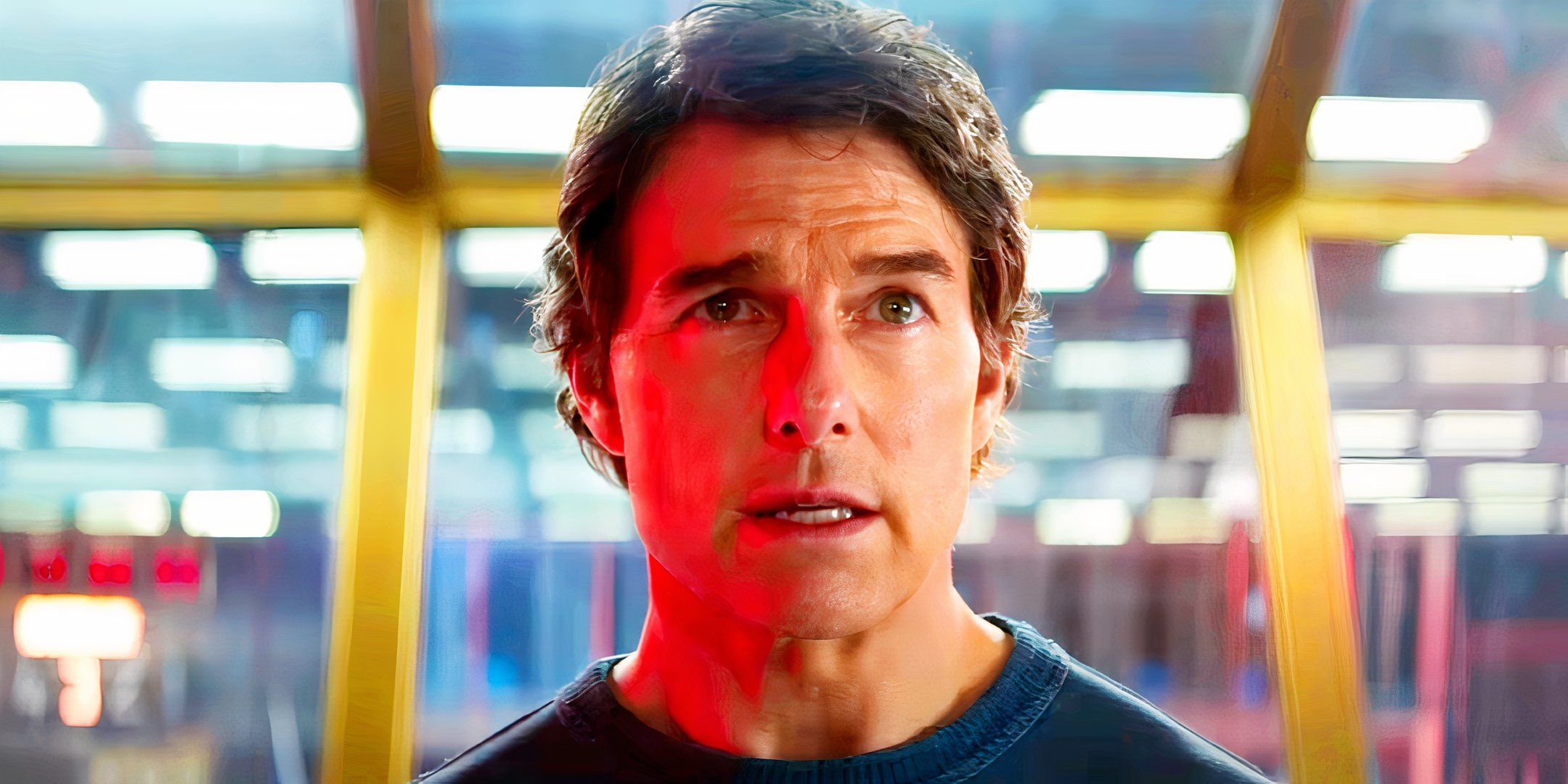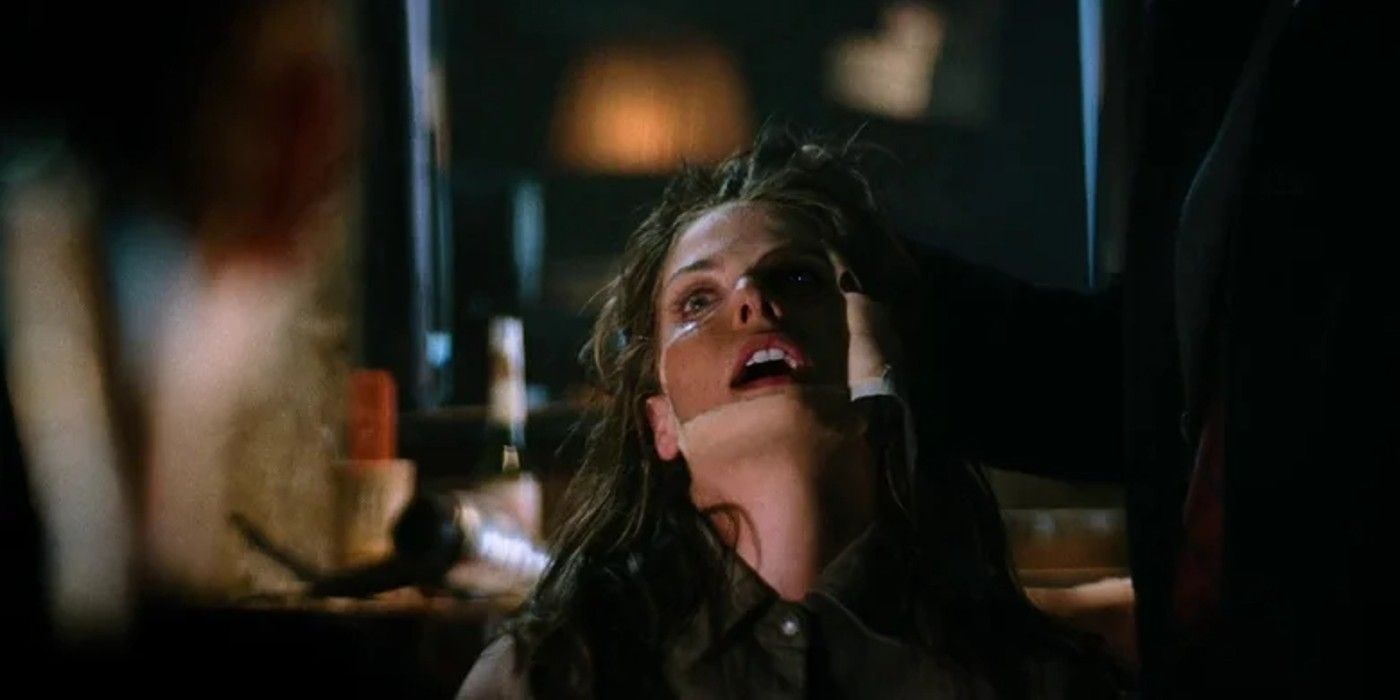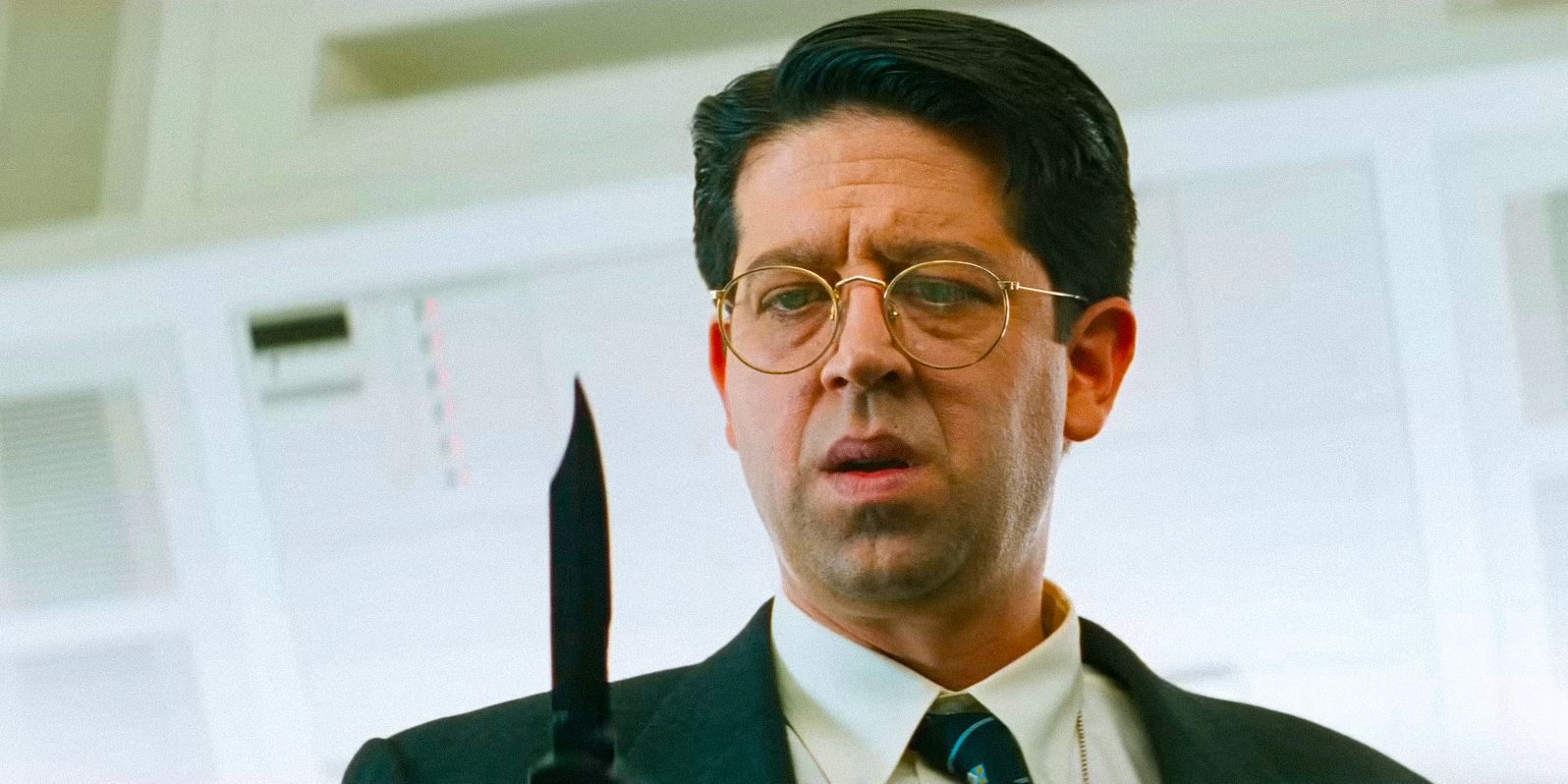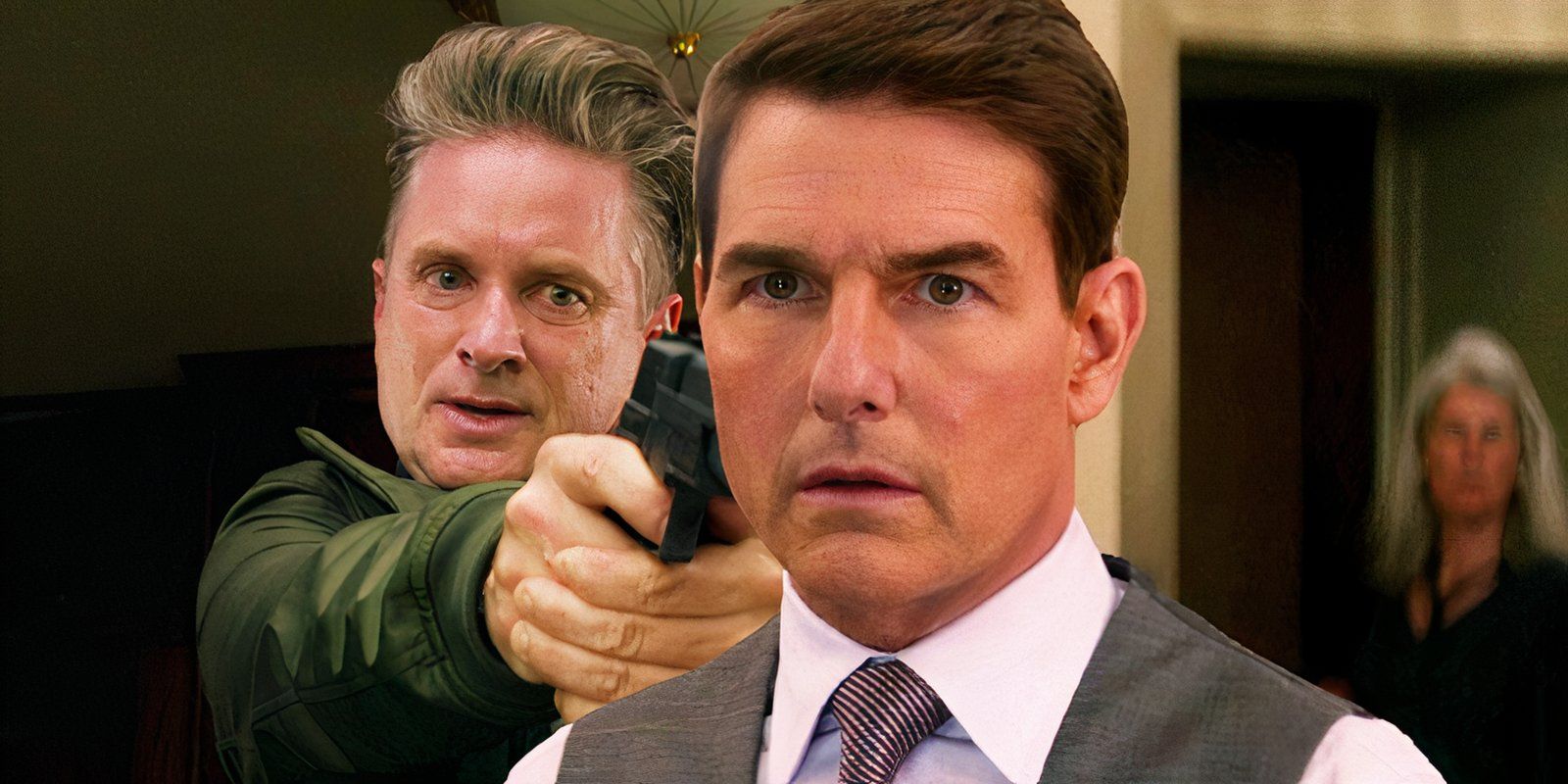Mission: Impossible – The Final Reckoning has arrived, and it’s a fitting conclusion for this long-running action franchise. The movie feels like a very holistic celebration of the series as a whole, as it could be Tom Cruise’s final one as Ethan Hunt. His IMF agent goes on a dangerous mission to try and stop The Entity and Gabriel, and it all culminates with Mission: Impossible – The Final Reckoning‘s ending delivering plenty of thrills.
Potentially wrapping up the franchise means there are many subtle Easter eggs and major story connections that expertly connect with the sequels that preceded it. The Mission: Impossible movies have never been too heavy-handed with their connections to past films, focusing more on recurring characters and vaguely building on the legendary missions Ethan and his IMF team have accomplished. The Final Reckoning takes a slightly different approach, including literally showing viewers familiar moments.
9
The Entity Cycles Through Mission: Impossible’s History
A Montage Of The Previous Seven Movies Kicks Off This Chapter
The very beginning of Mission: Impossible – The Final Reckoning is loaded with franchise callbacks, as The Entity flashes dozens, if not hundreds, of glimpses at the franchise across the screen. It’s too difficult to run through every single scene that’s shown, but the montage practically includes every significant, iconic moment from the franchise. The montage helps set the tone for the next nearly three hours and how it reuses old footage to let viewers see prior moments as they’re discussed.
In addition to showing scenes and even reusing some old dialogue as voice-overs, this sequence also runs through several characters who have been part of Ethan’s life. Major characters like Luther, Benji, Ilsa, and Julia are all seen. The Entity also shows Max from the first movie and Alanna, her daughter, from the previous two installments. Other one-off characters in the series, like Jane Carter and Lindsey Farris, are shown too. It’ll take a frame-by-frame breakdown of The Final Reckoning later on to call out every scene and character featured here.
The Events Of Mission: Impossible III Make An Important Comeback
Perhaps the most powerful revelation in The Final Reckoning is that Ethan is directly responsible for the creation of the Entity through his actions in Mission: Impossible 3. That movie follows Ethan’s hunt for the mysterious Rabbit’s Foot, a dangerous weapon thought to contain some kind of biological or chemical that could end the world. On multiple occasions, Ethan calls it “the Anti-God”, and that religious imagery comes back in The Final Reckoning when it’s revealed that the Rabbit’s Foot was a primitive AI that ultimately helped develop the Entity.
12:42
Related
ScreenRant’s Liam Crowley speaks with Mission: Impossible’s Esai Morales to discuss evolving Gabriel & The Final Reckoning’s death-defying sequences.
This subtly explains the religious imagery that’s associated with the Entity (such as its cruciform key and the “acolytes” who worship it), tying it back to Ethan’s concept of the Anti-God and proving that everything in this whole franchise is connected. It’s a very cyclical revelation that brings everything from the previous movies together, giving Ethan a much stronger bond with the Entity and onloading him with guilt surrounding its creation.
7
Owen Davian & Julia
Mission: Impossible 3’s Story Is Called Out
There’s also another very direct reference to Mission: Impossible III when Gabriel begins talking about the film’s villain, Owen Davian, and Ethan’s then-wife, Julia. Gabriel uses them both as a way to taunt Ethan while he and Grace are captured. The Entity’s former chosen one reminds Ethan of how Davian used the threat of harming someone he cared for to coerce him into doing something he didn’t want to. In Mission: Impossible 3, Davian kidnaps Julia and threatens to kill her if Ethan doesn’t bring him the Rabbit’s Foot.
For The Final Reckoning, Gabriel wants to replicate a successful villain plot. He threatens to kill Grace if Ethan doesn’t bring him a hard drive that will help him control the Entity. Unfortunately for Gabriel, things don’t go according to his plan.
6
Donloe’s New Home In The Arctic
William Donloe’s Punishment From 1996 Is Still Ongoing
There are several new additions to the cast of The Final Reckoning, but the film also brings back a few memorable characters from earlier in the franchise. One of these is William Donloe, the CIA agent who inadvertently lost his job after Ethan broke into Langley in 1996’s Mission: Impossible. Though he was only a minor character in the first movie, The Final Reckoning gives him plenty more to do and proves that he’s just as brave and noble as Hunt’s other colleagues.
This ties back to Donloe’s fate in the original Mission: Impossible, as he was sent away from Langley for mishandling the break-in.
Grace, Benji, and Paris encounter Donloe after traveling to a research center in the remote arctic to discover the coordinates of the ruined Sevastopol submarine from Dead Reckoning. This ties back to Donloe’s fate in the original Mission: Impossible, as he was sent away from Langley for mishandling the break-in. It clearly wasn’t planned way back in 1996, but it’s such subtle writing that it makes complete sense.
5
Briggs’ True Identity
Shea Whigham’s Character Has A Shocking Secret
While the return of William Donloe and the presence of the Rabbit’s Foot were both teased in The Final Reckoning’s trailers, one major twist that wasn’t hinted at is the true identity of Shea Whigham’s character, Jasper Briggs. In a tense moment between Ethan Hunt and Briggs, it’s confirmed that Briggs is actually the son of Jim Phelps – Jon Voight’s character from the original Mission: Impossible.
While this seems like nothing more than a fun Easter egg on the surface, it’s actually a very smart character decision that adds a whole new layer to the conflict between Hunt and Briggs. They’re not just adversaries because of their existing allegiances, but rather because of the past rivalry between Hunt and Briggs’ father. This subtly explains why Briggs was so eager to fight against Hunt in Dead Reckoning, and it makes their reluctant alliance in The Final Reckoning even more potent.
4
Ethan’s CIA Briefing
The Final Reckoning Includes A Fun Recap Of Hunt’s Previous Crimes
After Ethan hands himself into the CIA and gives up the cruciform key at the beginning of The Final Reckoning, Holt McCallany’s Secretary of Defence reads a list of crimes that have been leveled against the IMF agent in the past. He starts off by referencing the “CIA black vault break-in”, which is a key event in Brian de Palma’s original Mission: Impossible movie, before mentioning an explosion at the Kremlin and an infiltration of a CIA security briefing.

Related
Mission: Impossible – The Final Reckoning Runtime Sets All-Time Franchise Record
The runtime has now been revealed for Mission: Impossible – The Final Reckoning, and the upcoming action sequel sets a new franchise record.
The Kremlin bombing refers to the explosive first act of Ghost Protocol, when Ethan and Benji’s infiltration of the Kremlin is intercepted by Kurt Hendricks and the IMF is falsely blamed for the event. The security briefing infiltration references the beginning of Dead Reckoning, when Ethan works his way into Kittridge’s inner circle by posing as a member of security. These are two of Ethan’s most dangerous and, more importantly, most illegal actions throughout the Mission: Impossible franchise, so it makes sense that the CIA would still hold a grudge.
3
Donloe Returns Ethan’s Knife
The Knife Represents Hunt’s Past
Another small moment in The Final Reckoning that plays out in a hugely rewarding way is the dynamic between Ethan and Donloe. As they’re traveling to South Africa to meet with Gabriel and deplete the Entity’s grasp over the world’s nuclear forces, the pair share a heartfelt moment in which Donloe forgives Ethan for the Langley heist because, without it, he never would have met the woman that he loves. He gifts Ethan a knife as a symbol of forgiveness; this is the very same knife that Ethan left behind during the heist.
Mission: Impossible is typically known for its high-risk stunts and high-speed action scenes, but The Final Reckoning really makes an effort to focus on the smaller, character-driven moments in the story. This moment between Ethan and Donloe is a perfect example of that, giving the two characters closure through the silent (but very symbolic) gesture of Donloe returning Ethan’s knife. It’s a very fun Easter egg that rewards long-time fans of the franchise, but it also represents Ethan’s story coming full-circle in its final moments.
2
“Phineas Freak”
Luther References His Old Nickname In His Final Moments
It’s a much less noticeable callback, but Luther calling himself Phineas Freak in his final moments is one of The Final Reckoning’s most emotional lines. Ethan Hunt referred to Luther as Phineas Freak during their very first meeting in 1996’s Mission: Impossible because of his reputation as the only person to hack NATO Ghostcom. It’s this reputation that drew Ethan to Luther in the first place, and by evoking the same nickname in The Final Reckoning, Luther is subtly reminding Ethan of the many years they’ve spent together – while assuring his friend that he’s perfectly capable of defusing the bomb.
The friendship between Ethan and Luther has been one of the few constants of the Mission: Impossible franchise since the very beginning, and while Luther was always a likely candidate to die in The Final Reckoning, that didn’t make his sacrifice any easier to deal with. However, the fact that he still maintained his sense of humor in those final moments proves that Luther had no problem laying down his life for the people he loves – a key theme that runs throughout The Final Reckoning.
1
The President’s Letter
The Date On President Sloane’s Letter Is A Subtle Easter Egg
Another very small detail that only the keenest eyes will have noticed in The Final Reckoning is the date President Sloane’s letter to her old friend: May 22, 1996. While it’s explained in-universe as the date of an important tragedy that Sloane uses to convince the naval captain to give Hunt what he wants, the date has a much broader significance in that it’s the date Mission: Impossible first opened in theatres.
It’s a small detail that doesn’t really affect the plot (as it’s unlikely that Sloane’s event had anything to do with that original story), but it subtly reaffirms Mission: Impossible – The Final Reckoning’s recurring themes of full-circle storytelling and our lives being the sum of our choices.
This story originally appeared on Screenrant





